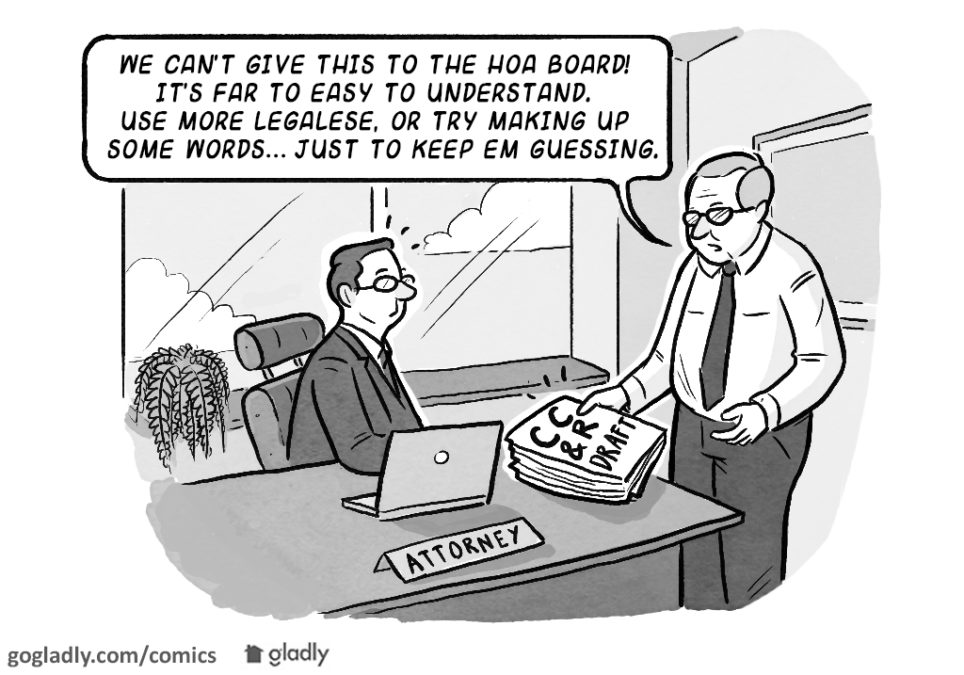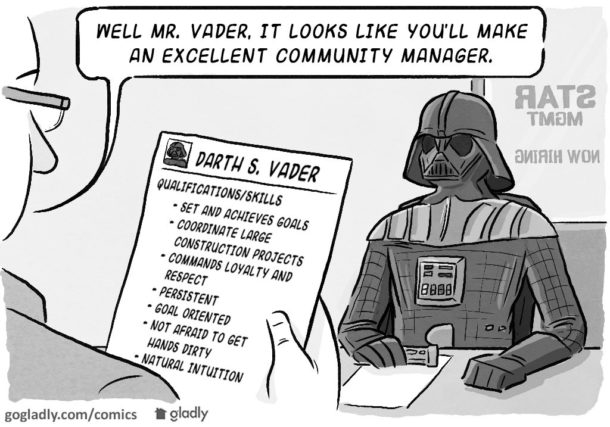A few months ago I wrote an article titled “Should Owners Really Read the HOA CC&Rs”. I must admit, the title was intended to get the attention of community association professionals. As a result some of the comments on social media were a resounding “Yes! How could you ask such a stupid question?”. While I agree, I’m not convinced that some of them actually read the article — ironic right?
Anyway, the article revealed the “startling news” (heavy sarcasm) that most homeowners rarely read the HOA documents and even when they do, they usually don’t see the whole picture. The advice in the article focused on how managers and board members could improve homeowners understanding through better communication.
It’s true that many homeowners don’t read the CC&Rs. Often misunderstandings come about because they don’t really know how the HOA works and how to go about changing a policy or rule. Here are a few things that homeowners should understand about their governing documents and their HOA.
HOA Documents are Not Easily Changed
CC&Rs are a legal document recorded on your property. By design they are not easy to change and better that they don’t frequently change. Nobody wants the rules to change after the game has started, right? Unfortunately this difficulty in amending the CC&Rs can be a double-edged sword. When a change is needed in the CC&Rs it can feel like an impossible task to get homeowners to vote — much less agree.
Changing the CC&Rs usually requires the approval of at least two thirds of the HOA. That means that changes will need overwhelming support from the members. Calling and nagging the manager three times a day, is not going to change a rule that’s spelled out in the HOA documents.
The Devil’s in the Details
Typically the CC&Rs outline general regulations but leave many of the details to policies and rules adopted by the board of directors. For example the HOA documents may limit animals to “two common household pets”. The board will most likely have a supporting pet policy that will better define what a household pet is, and procedures on registration, vaccinations, etc. These different levels of rules can cause confusion so when you are researching the HOA documents make sure to get all of them.
It’s also important to remember that rules and policies adopted by the board are more easily changed. So if you want to see change in a policy start with the ones adopted by the board rather than fighting to change the CC&Rs.
Your Bias is Showing!
In many cases homeowners read the HOA documents in order to enforce their position with regard to a dispute with the HOA. They will usually skim through until they find a paragraph discussing their issue. Sometimes this works just fine but remember, most policies outlined in the CC&Rs are controlled by the definitions, supporting sections of the CC&Rs and clarified by rules and policies adopted by the board. It’s easy to have preconceived ideas about what a “Unit” is or “Common Area” means. But the definition contained in the CC&R’s can drastically affect the meaning.
We all have bias, but when you let it show, you lose credibility. Try to look at the HOA documents objectively and honestly. By understanding the intent you may be able to find better solutions and create change in your community. If nothing else, you will gain a better understanding of the rules.
- Liar, Liar, Pants on Fire! Handling Misinformation in Your HOA - March 13, 2019
- Setting the Ground Rules for Neighbor Disputes - June 27, 2018
- HOA Board Responsibilities – It’s Not as Difficult as You’re Making It. - April 23, 2018



 Help
Help
Excellent comments on HOA documents.
So true, and… very funny comic!
Seriously. This is awesome.
I think this might need to be required reading for anyone on an HOA board. We’ve used building rules to provide clarification for the CC&Rs, which weren’t drafted very well, and are overdue for an update desperately. I appreciate hearing that my concerns are shared by others.
Thanks!
Sirinya
Santa Monica, Calif.
Hi Sirinya
I am glad you liked it! Thanks for your comments.
I am in the process of trying to get copies of our CCRs. After 4 attempts, I went to the VASCC and looked up all the info and submitted my 5th request. I guess that did it as they sent them to me immediately.
The second request I made was for documents concerning the Association. I told them I had no problem paying. They turned that over to an Attorney and my request was denied. Funny, I can run for the BOD yet am not privy to past information. So, read them, Brother I am haveing problems just getting them!
This is going to be a fun Podcast. How to not sound biased when I could bite a 16 penny nail into. I am glad I subbed your site and allways look forward to reading your information.
Thanks for your comments Dana. I will never understand why associations don’t make those documents readily available – Especially CC&Rs and by-laws.
It baffles me as well Burke. We have talked about the different types of BODs as well as Members before. These guys are screaming poor mouth and yet I have documentation stating I would cover any and all cost associated with obtaining these documents.
If I don’t have a reference to read, then how can I or any other member, be held accountable for violations? It simply makes no sense.
Anywho, the fight will go on and come He** or high waters, I will receive the information I requested. If they think they were poor before, wait till they get the bill for legal action!